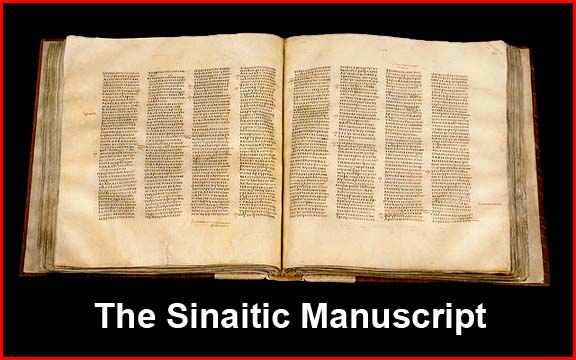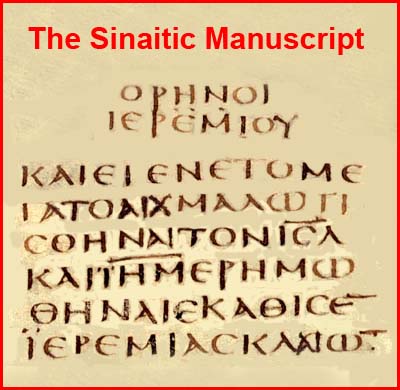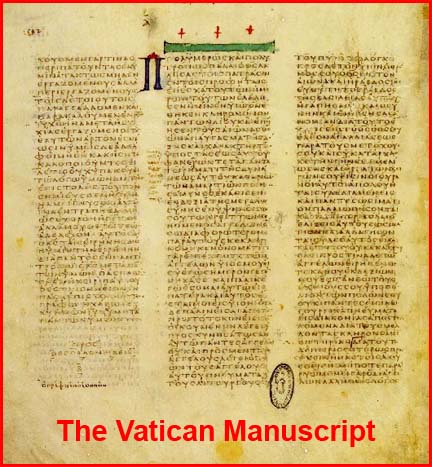| Devotion to Our Lady |
|
- Homepage
-
Daily Thoughts
- 2023 October Daily Thoughts
- Daily Thoughts Lent 2020
- Daily Thoughts for Advent 2019
- Daily Thoughts for October 2019
- Daily Thoughts for September 2019
- Daily Thoughts for August 2019
- Daily Thoughts for July
- Daily Thoughts for June
- Daily Thoughts for Easter 2019
- Daily Thoughts for Lent 2019
- Daily Thoughts for Christmas
- Daily Thoughts Easter 2022
- Sacred Heart
- Holy Ghost
-
Spiritual Life
- Holy Mass Explained
- First Friday Devotions
- First Saturday Devotions
- The Mercy of God
- Vocations
- The Path Everyone Must Walk >
- Gift of Failure
- Halloween or Hell-O-Ween?
- Ignatian Spiritual Exercises >
- Meditation is Soul-Saving
- Spiritual Communion
- Miraculous Medal
- Enrollment in Miraculous Medal
- St. Benedict Medal
- Holy Water
- Advice on Prayer
- Your Daily Mary
-
Prayers
- September Devotions
- Seven Sorrows of Our Lady
-
Novenas
>
- NV-Help of Christians
- NV-Nativity of Our Lady
- NV-Seven Sorrows
- NV- Sorrowful Heart
- NV-Pope St Pius X
- NV-La Salette
- NV-St Michael Archangel
- NV-Immaculate Heart
- NV-Assumption
- NV-Novena for Fathers
- NV-Novena for Your Mother
- NV-St Raphael Archangel
- NV-Souls in Purgatory
- NV-All Saints Day
- NV-Christ the King
- NV-Divine Motherhood
- NV-Guardian Angels
- NV-Rosary
- NV-Mirac Med
- NV- Imm Conc
- NV - Guadalupe
- NV - Nativity of Jesus
- NV-Epiphany
- NV-OL Good Success
- NV-Lourdes
- NV-St Patrick
- NV-St Joseph
- NV-Annunciation
- NV-St Louis de Montfort
- NV-OL Good Counsel
- NV-Last Supper
- NV-Passion
- NV-Pentecost
- NV-Ascension
- NV-Sacred Heart
- NV-Sacred Heart & Perpetual Help
- NV-Corpus Christi
- NV-OL of Perpetual Help
- NV-Queenship BVM
- NV-OL of Mount Carmel
- NV-St Mary Magdalen
- NV- Im Hrt
- August Devotions to IHM
- Immaculate Heart of Mary
- Litany of Dependence
- Prayers to St Mary Magdalen
- Prayers in Times of Sickness Disease & Danger
- Holy Souls in Purgatory
- Meditations on the Litany of Our Lady
- Special Feast Days
- Prayers to Mary (Mon-Sun)
- Litanies to Our Lady >
- Various & Special Needs
- Our Lady of the Rosary
- Our Lady of Mt. Carmel
- Our Lady of Perpetual Help
- Our Lady of Guadalupe
- Other titles of Our Lady
-
Rosary
- Downloads
- Consecration
- Easter Season
-
Holy Week
- Last Seven Words of Jesus >
- Characters of Passion >
- The Last Days of Christ
- Before Palm Sunday
- Palm Sunday
- Monday in Holy Week
- Tuesday in Holy Week
- Wednesday in Holy Week
- Holy Thursday (Last Supper)
- Holy Thursday (Agony & Arrest)
- Night Vigil with Christ
- Good Friday (Pilate & Herod)
- Good Friday (Way of Cross & Crucifixion)
- Saturday in Holy Week
-
Lent
- Ideas for Lent
- Daily Lenten Planner
- Daily Lenten Liturgy
- From Cold to Hot
- Lent with Aquinas
- Lent with Dom Gueranger
- Virtues for Lent
- History of Penance
- How Expensive is Sin?
- Confession of Sins
- Letter to Friends of the Cross
- Sermons for Lent
- Stations of the Cross >
- Lenten Prayers
- 7 Penitential Psalms
- Lenten Psalms SUN
- Lenten Psalms MON
- Lenten Psalms TUE
- Lenten Psalms WED
- Lenten Psalms THU
- Lenten Psalms FRI
- Lenten Psalms SAT
- Lenten Laughs
- Septuagesima
-
Christmas
- Epiphany Explained
- Suggestions for Christmas
- Food For Thought
- Christmas with Aquinas
- Christmas with Dom Gueranger
- Christmas Prayers
- Candles & Candlemas
- Christmas Sermons
- Christmas Prayers SUN
- Christmas Prayers MON
- Christmas Prayers TUE
- Christmas Prayers WED
- Christmas Prayers THU
- Christmas Prayers FRI
- Christmas Prayers SAT
- Twelve Days of Christmas >
-
Advent Journey
- Purgatory
- Christ the King
- Legion of Mary
- Scapular
-
Saints
-
Martyrs for the Faith
>
- Your Daily Martyr >
- All 365 Days of Martyrs
- Cristeros
- St Valentine & Valentine's Day
- Martyrs--Thomas Becket
- Martyrs--John the Apostle
- Holy Machabees
- Age of Martyrdom
- Carmelites of Compiegne
- Martyrs--Peter & Paul
- Martyrs--John the Baptist
- Martyrs--Andrew
- Martyrs--James the Great
- Martyrs--North American
- Martyrs--Seven Holy Sleepers
- Martyrs--Afra
- School of Martyrdom
- Martyrs--Christina
- Desert Saints >
- Saints for Sinners >
- Saints of Mary >
- History of All Saints Day
-
Martyrs for the Faith
>
- Precious Blood
- Synod 2023
-
Catechism
- Catechism Lesson 1
- Catechism Lesson 2
- Catechism Lesson 3
- Catechism Lesson 4
- Catechism Lesson 5
- Catechism Lesson 6
- Catechism Lesson 7
- Catechism Lesson 8
- Catechism Lesson 9
- Catechism Lesson 10
- Catechism Lesson 11
- Catechism Lesson 12
- Catechism Lesson 13
- Catechism Lesson 14
- Catechism Lesson 15
- Catechism Lesson 16
- Catechism Lesson 17
- Catechism Lesson 18
- Catechism Lesson 19
- Catechism Lesson 20
- Catechism Lesson 21
- Catechism Lesson 22
- Bible Study
-
Calendar
- Miracles
- Apparitions
- Shrines
- Prophecies
- Angels Homepage
- Hell
-
Church Crisis
- Conspiracy Theories
- Amazon Synod 2019 >
- Liberalism & Modernism
- Modernism--Encyclical Pascendi
- Modernism & Children
- Modernism--Documents
- The Francis Pages
- Church Enemies on Francis
- Francis Quotes
- Amoris Laetitia Critique
- Danger of Ignorance (Pius X)
- Restore all In Christ (Pius X)
- Catholic Action (Pius X)
- Another TITANIC Disaster?
- The "Errors of Russia"
- CRISIS PRAYERS
- Election Novena 2024
- The Anger Room
- War Zone
- Life of Mary
- Spiritual Gym
- Stupidity
- Coronavirus and Catholicism
- History & Facts
- Books
- Catholic Family
- Children
- Daily Quiz
-
Novena Church & Pope
- Day 01 Church-Pope Novena
- Day 02 Church-Pope Novena
- Day 03 Church-Pope Novena
- Day 04 Church-Pope Novena
- Day 05 Church-Pope Novena
- Day 06 Church-Pope Novena
- Day 07 Church-Pope Novena
- Day 08 Church-Pope Novena
- Day 09 Church-Pope Novena
- Day 10 Church-Pope Novena
- Day 11 Church-Pope Novena
- Day 12 Church-Pope Novena
- Day 13 Church-Pope Novena
- Day 14 Church-Pope Novena
- Day 15 Church-Pope Novena
- Day 16 Church-Pope Novena
- Day 17 Church-Pope Novena
- Day 18 Church-Pope Novena
- Day 19 Church-Pope Novena
- Day 20 Church-Pope Novena
- Day 21 Church-Pope Novena
- Day 22 Church-Pope Novena
- Day 23 Church-Pope Novena
- Day 24 Church-Pope Novena
- Day 25 Church-Pope Novena
- Day 26 Church-Pope Novena
- Day 27 Church-Pope Novena
- Day 28 Church-Pope Novena
- Day 29 Church-Pope Novena
- Day 30 Church-Pope Novena
- Day 31 Church-Pope Novena
- Day 32 Church-Pope Novena
- Day 33 Church-Pope Novena
- Day 34 Church-Pope Novena
- Day 35 Church-Pope Novena
- Day 36 Church-Pope Novena
- Day 37 Church-Pope Novena
- Day 38 Church-Pope Novena
- Day 39 Church-Pope Novena
- Day 40 Church-Pope Novena
- Day 41 Church-Pope Novena
- Day 42 Church-Pope Novena
- Day 43 Church-Pope Novena
- Day 44 Church-Pope Novena
- Day 45 Church-Pope Novena
- Day 46 Church-Pope Novena
- Day 47 Church-Pope Novena
- Day 48 Church-Pope Novena
- Day 49 Church-Pope Novena
- Day 50 Church-Pope Novena
- Day 51 Church-Pope Novena
- Day 52 Church-Pope Novena
- Day 53 Church-Pope Novena
- Day 54 Church-Pope Novena
- Penance Novena
- Daily WeAtheR Forecast
WELCOME TO THE BIBLE STUDY & BIBLE HISTORY PAGES
A Weekly Bible Study Lesson will be posted each week
A Weekly Bible Study Lesson will be posted each week
The best way to participate in the Bible Study Lesson, is to read a little each day (or a few times a week). It is the same with food, we could not possibly eat, in one single meal, the amount of food we would eat over the course of one week. Review is also important. Too often we only read superficially and within a few days we have forgotten half of what we read. The Bible is the word of God, and, as Holy Scripture says: “Not in bread alone doth man live, but in every word that proceedeth from the mouth of God” (Deuteronomy 8:3; Matthew 4:4) … “And Jesus answered the devil: ‘It is written, that Man liveth not by bread alone, but by every word of God!’” (Luke 4:4). Let us therefore nourish ourselves upon the Word of God, a little at a time.
LESSON 3 : THE DIFFERENT BIBLE MANUSCRIPTS
This article is currently being written. Sections will be posted as they are completed. Please check back later.
This article is currently being written. Sections will be posted as they are completed. Please check back later.
|
THE OLDEST MANUSCRIPTS OF THE BIBLE
1. No Autographs (which means originals written by the hands of the inspired writers) of the books of the Bible have come down to us. This is due partly to the perishable material (papyrus) used by the writers, partly to the fact that the Roman emperors decreed the destruction of the sacred books of the Christians (Edict of Diocletian, A. D. 303). Tertullian says that the originals of the Epistles of St. Paul were still preserved in his day in Thessalonica. “The alleged autographs of St. Mark in Venice and Prague belong to the realm of legend” (Schumacher, Handbook of Scripture Study, Vol. I, p. 14). 2. We possess very ancient copies of all of the books of the Bible. These copies are called Biblical Manuscripts (handwritings: the Latin manus meaning “hand” and the verb scribere, scriptus meaning “to write” and “written”). The oldest Hebrew manuscript, dating from the tenth century, was found in the Crimea in 1839. It contains only the later Prophets. Other Hebrew manuscripts were found among the Jews in China and on the coast of Malabar. Of the Greek manuscripts the following are the most important: (a) THE SINAITIC MANUSCRIPT belongs to the fourth century. Constantine Tischendorf discovered it in 1859 in the Monastery of St. Catharine on Mt. Sinai. Tischendorf believed that it was one of the fifty precious Bible manuscripts which, as the Church historian Eusebius tells us, were made by order of Constantine the Great for the churches of Constantinople. It contains the greatest part of the Greek translation of the Old Testament and the whole of the New. The Sinaitic MS is in St. Petersburg (Leningrad). (b) THE VATICAN MANUSCRIPT in the Vatican Library at Rome also dates from the fourth century and is believed to have been brought to Rome by St. Athanasius the Great in 342. It contains the whole Bible with only a few gaps. A beautiful facsimile edition in six volumes was published in 1868 at the expense of Pius IX. (c) THE ALEXANDRINE MANUSCRIPT, which contains practically the whole Bible, belongs to the fifth century. It was discovered on Mt. Athos and is preserved in the British Museum in London. (d) THE PARISIAN MANUSCRIPT, which also belongs to the fifth century, contains the greater part of the New Testament and some fragments of the Old Testament. It is a Palimpsest (re-written) manuscript, some writings of St. Ephraim having been written across the Biblical text, which had been more or less erased, but is still legible. All these manuscripts, and very many later ones, are written on parchment or vellum (made of the skin of sheep, goats or calves in so-called uncial (capital) letters—small letters were not used till the tenth century—and bound in book form (codex, p1. codices). The words are not separated and, as no punctuation marks are employed, it is sometimes hard to distinguish the interrogative from the declarative sentences.—A few fragments of the New Testament written on papyrus and potsherds of clay (ostraca), the writing material of the poor, have been recently discovered in Egypt. THE MOST IMPORTANT VERSIONS OF THE BIBLE 1. The Books of the Old Testament were translated from the original Hebrew into Greek long before the time of Christ, and those of the New Testament from the Greek original into Latin, Syriac, and other languages no later than the second century after Christ. 2. The most important translations are the Greek Septuagint (LXX) and the Latin Vulgate. (a) THE SEPTUAGINT translation of the Old Testament was made in the third century before Christ to meet the religious needs of the Jews of Alexandria in Egypt. In the year 320 B.C., Ptolemy Lagi, the Macedonian King of Egypt, captured Jerusalem and carried off 200,000 Jews to Egypt. The captives settled in Alexandria and the neighboring districts. Many of their countrymen followed them into voluntary exile. The Alexandrine Jews gradually lost all knowledge of their Hebrew mother tongue and adopted the Greek language. If they wished to practice their religion, a Greek translation of the Bible became a necessity. During the reign of Ptolemy Soter (305-285 BC) the five Books of Moses were translated into Greek, as the legend has it, by seventy or seventy-two learned Jews from Jerusalem, whence the name Septuagint, that is, “the work of the Seventy” (Latin, Septuaginta). The name Septuagint, though it applies, strictly speaking, only to the Books of Moses, was afterwards extended to include the other books of the Old Testament as they were translated during the next hundred years. At about 130 BC, when Sirach translated the Book of Proverbs (Ecclesiasticus) of his grandfather into Greek, most of, if not all, the Old Testament Hebrew books had been translated. Through the Septuagint translation, which is, on the whole, very faithful and reliable, many Greek-speaking pagans obtained a knowledge of divine revelation and were thus prepared for the preaching of the Gospel. The Apostles made use of the Septuagint in their preaching and writing, thus consecrating it, as it were, for all time. (b) THE VULGATE is the most famous Latin translation of the Bible. It is almost exclusively the work of St. Jerome, who under-took it at the request of Pope Damasus (366-384). Up to that time there had been several Latin translations in use, of which the so-called Itala was the most popular. The Itala version was made from the Greek and dates back to the second century. The whole New Testament and some parts of the Old Testament of the Itala have been preserved. The Scripture texts in the Missal are mostly taken from it. Because the Itala was unsatisfactory in many respects, Pope Damasus asked St. Jerome, who was then acting as his secretary, to revise it. Before the Pope's death (384) St. Jerome published a revised text of the four Gospels, the Epistles of St. Paul, and the Psalms. Later on, during his retirement in Bethlehem, he translated the whole of the Old Testament, with the exception of a few deutero-canonical books, from the Hebrew and the Greek. The translation of Jerome became by degrees the only Latin version of the Bible used in the Western Church, and for this reason it was known as the Vulgate (Latin: vulgata, meaning “disseminated” or “commonly used”). In its fourth session the Council of Trent declared the Vulgate to be the authentic (official) Latin version, and the one to be used in public in the Western Church. The Council does not prefer the Vulgate before the original texts or the ancient versions, such as the Septuagint, that had always been in use in the Church. The sense of the decree is, “that the Vulgate is in substantial conformity with the original sacred text particularly in its expression of those truths of faith and morals which contribute in any way to the knowledge of God as man's supernatural end, and of the means of attaining that end.” The decree of the Council does not imply that the editions of the Vulgate then in use were absolutely free from error. As a matter of fact, it ordered that a corrected edition should be published as soon as possible and henceforth used as the official text of the Bible. This revised text appeared in 1592 under Pope Clement VIII. Since 1907 a commission of Benedictine monks has been at work preparing a new edition of the Vulgate. Thus far, only a few books of the Old Testament have been published (Vatican Press). 3. Other Translations of the Bible—A Gothic translation of the Bible was made in the fourth century by Ulfilas, an Arian bishop of the Goths (d. 383). This Gothic Bible, the earliest literary document in any Teutonic language, has been preserved in part in the famous Codex Argenteus, the “Silver Manuscript,” thus called because it is written in silver and gold ink on purple vellum. It was discovered in Werden on the Ruhr (Germany), and after many wanderings found a home in the university library of Upsala in Sweden. 4. Our English translation of the Bible is known as the Douay Version, because it was prepared at the English College of Douay (Douai) in France. The New Testament was published at Rheims in 1582, the Old Testament at Douay in 1609. In the course of time several revisions of the Douay Bible appeared, the best being that of Bishop Challoner in 1750. A new translation from the original Hebrew and Greek, with critical notes, called the Westminster Version of the Sacred Scripture, is in course of publication (Lon-don and New York: Longmans, 1914 seq.) 5. The English Protestant translation of the Bible most widely used is the so-called “Authorized Version” of 1611. It was dedicated to King James I and is generally known as the “King James' Bible.” A revised version was published in 1881-1885. |
Web Hosting by Just Host




